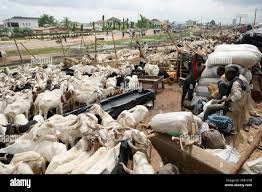China has recently introduced a number of stimulus measures aimed at reviving its faltering economy which is yet to recover from the dampening effects of the country’s prolonged post-covid lockdown.
The People’s Bank of China (PBoC) announced the package of stimulus during a briefing on Tuesday.
The stimulus package is intended to both reduce the cost at which households and businesses borrow money from banks and includes measures to stimulate lending by Chinese banks. The Peoples’ Bank of China reduced reserve requirement ratios for banks by 0.5% – this will create an additional $142bn of lending capacity in the banking system.
Specific Support for China’s Housing Sector and the Chinese Stock Market
China’s massive real estate sector, worth $130.70tn or 29% of the GDP, has experienced severe strain with major developers failing and millions of houses uncompleted or unsold. The People’s Bank of China Governor Pan Gongsheng announced a reduction of the interest rate on existing mortgages and fixing the minimum deposit on homes to 15% of the value of the property, a 10% reduction.
In an effort to stabilize the financial markets, the PBoC has also announced a Rmb500 billion fund aimed at assisting brokers, insurance companies, and investment funds in purchasing stocks.
Additionally, the PBoC will provide Rmb300 billion to support companies in conducting share buybacks. These measures are designed to bolster investor confidence and provide much-needed liquidity to the markets.
PBoC governor Pan Gongsheng emphasized that these measures are designed to “support the stable growth of China’s economy” and encourage a moderate price rebound.
The immediate impact was evident as the CSI 300 index- including major Shanghai and Shenzhen-listed shares – increased by 4.3%, marking its best performance since July 2020, while Hong Kong’s Hang Seng index also rose by 4%.
The PBoC would lower the seven-day reverse repo rate from 1.7% to 1.5%. This rate serves as a policy tool for the central bank, influencing liquidity in the financial system.
“The Chinese economy is recovering and the monetary policies introduced by our bank this time will help support the real economy, incentivise spending and investment and also provide a stable footing for the exchange rate,” Gongsheng stated.
What does this mean?
This simultaneous move reflects increasing concerns over economic growth in China, with Goldman Sachs noting the unusual magnitude of the cuts and the potential for further easing.
Despite these efforts, analysts express skepticism about achieving the government’s growth target of 5% for the year.
The demand for loans among households remains weak, suggesting that more direct fiscal stimulus may be necessary.
The Chinese economy has been facing a prolonged slowdown, particularly in the property sector, which has dampened consumer sentiment.
As a result, many analysts have revised their growth forecasts downward, predicting challenges in achieving the government’s target due to persistent deflationary pressures.
Implications for Nigeria
The recent monetary policy adjustments by the PBoC also come in the context of global economic shifts.
Following the US Federal Reserve’s decision to cut its benchmark interest rate by half a percentage point—its first such reduction in over four years—the PBoC has found itself with more room to maneuver.
While China’s new stimulus measures are a positive step, the effectiveness of these actions will depend on the swift implementation of additional policies to restore confidence in the economy and revive domestic consumption.
The implication for Nigeria is that oil prices are likely to rise as the two biggest economies in the world have eased lending to boost demand and production.























